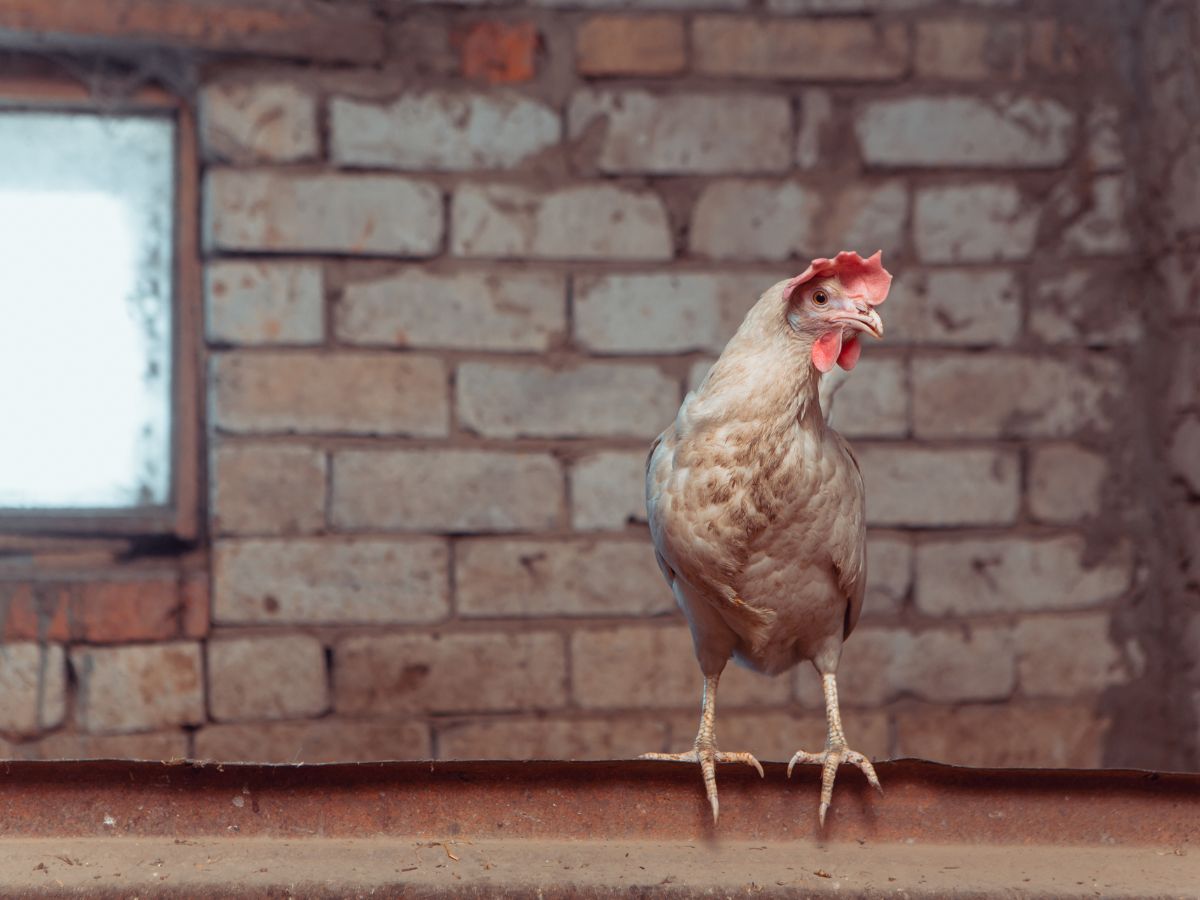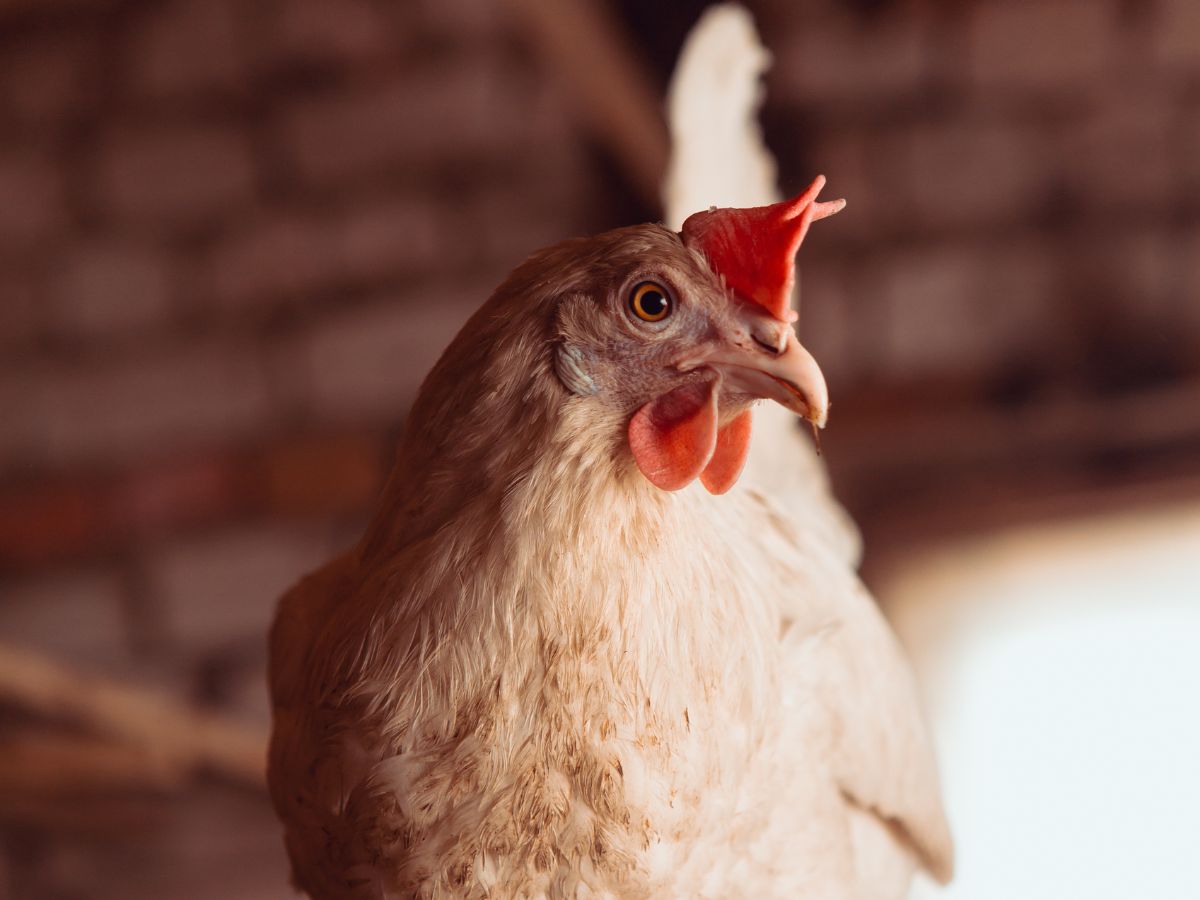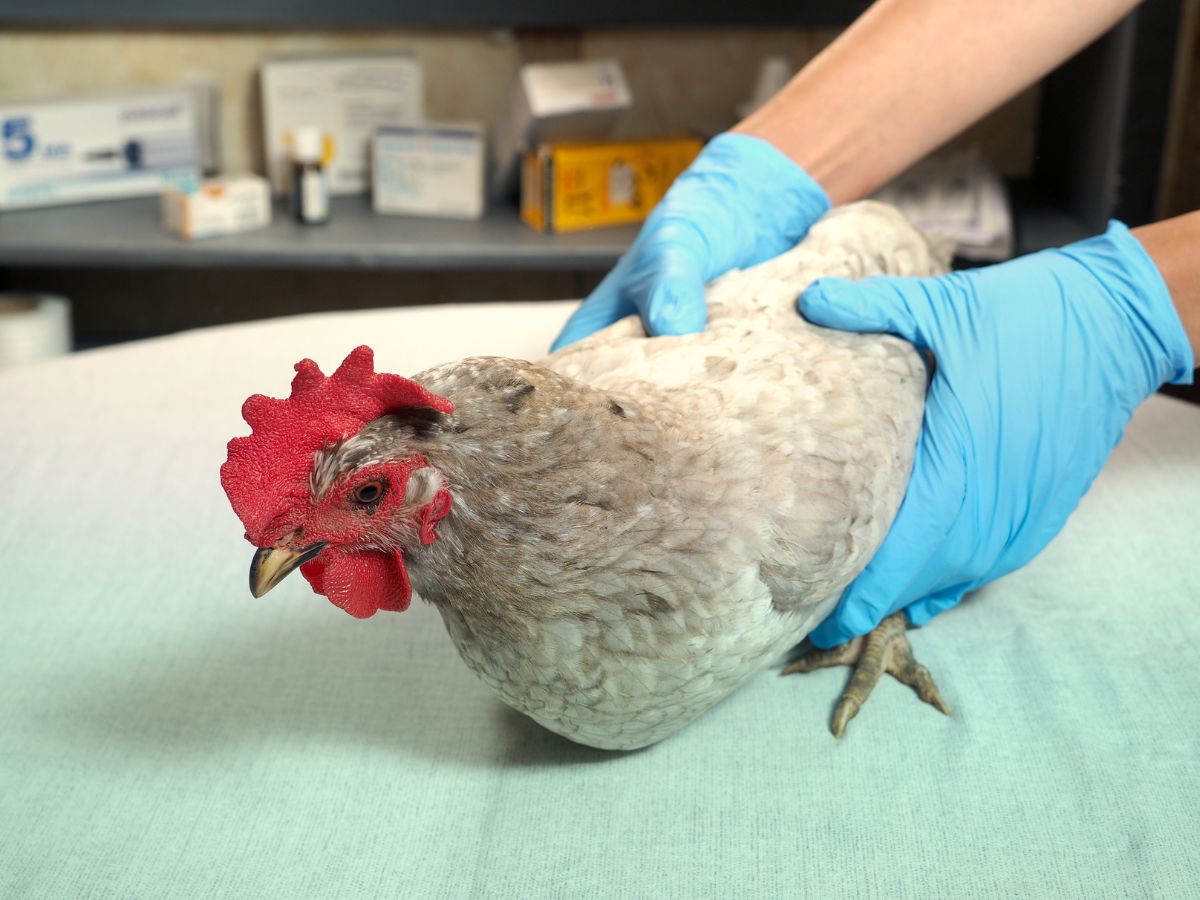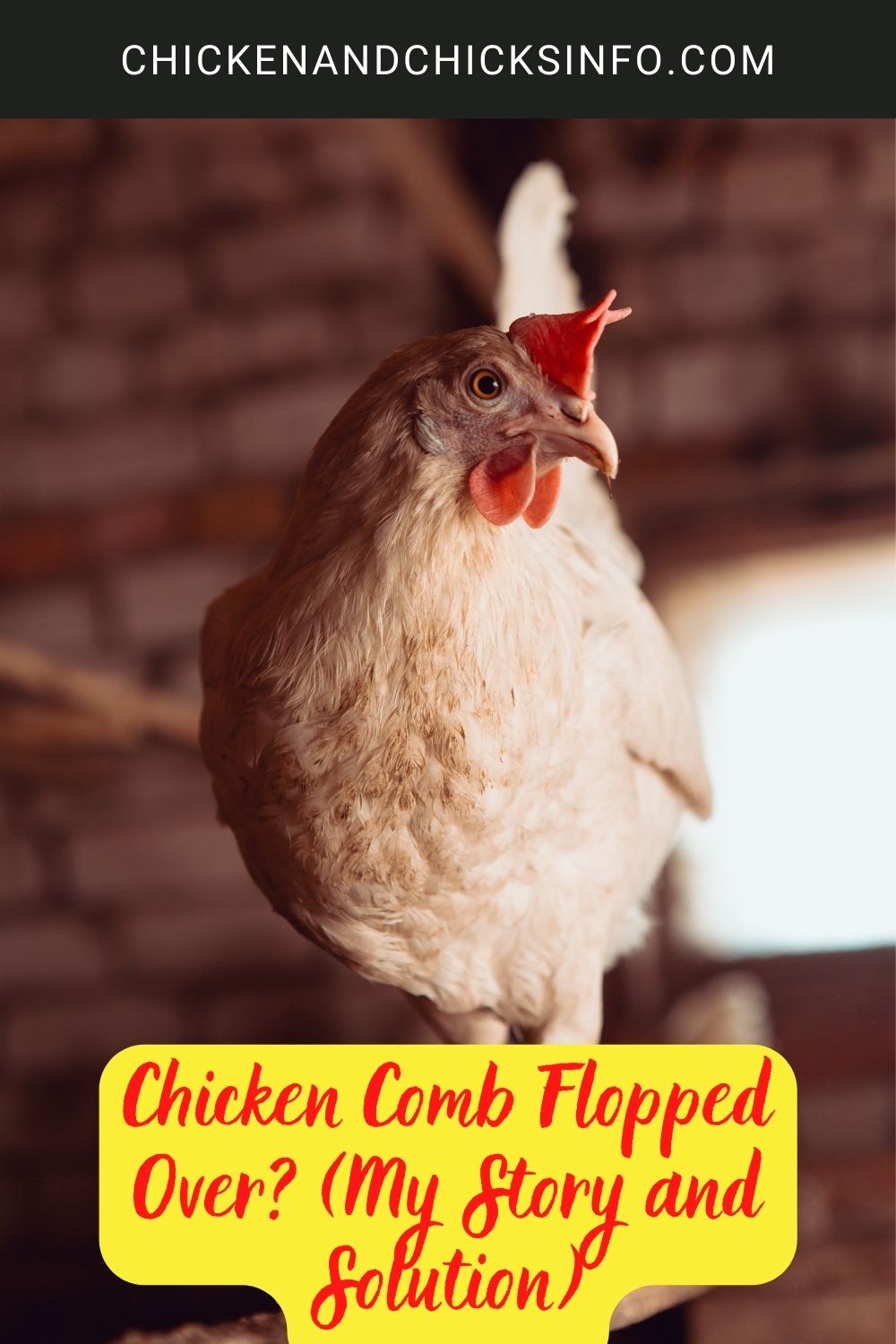
If one of your chickens’ combs has flopped over this is usually - but not always - a sign that there is some kind of health issue.
If their comb is also paler than it should be, there is almost certainly some kind of underlying issue.
Jump to:
What Happened When My Rhode Island Red Comb Flopped Over
A couple of years ago one of my Rhode Island Red’s had a floppy comb. I had actually noticed her comb was a paler red than normal a few days before, but she seemed in good health.
Then a day before her comb flopped over she didn’t eat any of the grains I threw down, which was not like her.
I also noticed she was walking slowly and just kind of looked a bit lost. I checked her over, and she didn’t seem to be in any pain. As it was late, I thought I would take a better look in the morning.
The next morning she was sitting in her coop and her comb had flopped over to the side. She looked very sorry for herself, so I picked her up and headed off to the vets.
Much to my surprise, because I had handled her a fair bit, the vet told me she had an impacted crop.
In my defense, I’ve never seen or dealt with an impacted crop before. So, while I knew what it was, I had no experience spotting or diagnosing it myself.
Long story short; he flushed her crop out and gave her some antibiotics. Within days she was back to normal and her comb was once again standing proud and a bright red!
Now I’m fully clued up about what an impacted crop is and how to spot it earlier in future. Hopefully, this information will help some of you guys and gals.
What Is an Impacted Crop?

If you’re not familiar with parts of a chicken’s anatomy, the crop is part of a chicken’s digestive system. It’s located at the front of their breast and basically holds their food after they swallow it.
You can actually see the front of a chicken bulging out when their crop is full. When they’re ready to digest their food, it moves from the crop into their gizzard.
For the most part, most of the food they eat during the day is stored in their crop and it’ll empty overnight.
The crop becomes “impacted” when something is causing a blockage. It doesn’t happen often, but anyone who keeps backyard chickens will know they often eat first and question later.
This means any foreign objects that cannot pass from the crop will cause a blockage. As will too much woody grass and tough materials like straw and hay.
Not being able to pass food through their digestive system causes some serious health issues.
I’ve read it’s more common in free-range chickens as they forage around and eat more things that could potentially cause a blockage. But it’s just one of those things that can happen at any time.
Symptoms of an Impacted Crop
If you suspect one of your chickens has an impacted crop, look for the following signs:
- They are not eating or drinking - they can’t as their crop if full!
- They are not pooping normally or their feces is runny
- Their comb is pale and flopped over to one side - this was an alarm for me
- Their crop feels full and firm
- She’s stopped laying or is laying less eggs
If you’re seeing a lot of these symptoms but their crop is soft and squishy and there is a foul smell coming out of their beak, it might be sour crop.
Sour crop is often developed as a result of an impacted crop. It means your chicken also has a yeast infection called Candida albicans.
Related content - 8 reasons why chickens stop laying eggs explained.
Treatment for an Impacted Crop

The vet that flushed my girl’s crop poured some kind of food-grade oil into her crop and massaged it from the outside to lubricate and separate the contents.
You can then either work the contents until the blockage moves one way or the other. You might need to repeat the process until the crop is visibly near to empty, this will have removed the blockage.
If the blockage is more serious and it’s evident some oil and a massage aren’t moving it, you’ll need to get your bird to the vet.
They can use something a bit stronger or a stool softener to try and clear out their digestive system. My vet also said that in extreme cases he’s had to cut open a crop and remove the contents before.
There are some options though and if you seek out medical attention I’m sure your chick will be fine. It’s not one of the more serious issues.
In Summary
I hope you enjoyed reading my story of how spotting a floppy comb on one of my Rhode Island Reds led to finding out that she had an impacted crop.
From having a sick chicken to getting her the help she needed, it was a wild couple of days.
The lesson I learned is that a chicken’s comb is a great indication of their general health. If you spot anything out of the ordinary with one of your flock, such as a limp or pale comb, do some investigating to find out if something is wrong with them.
Related content - Why is my chickens comb turning black?





